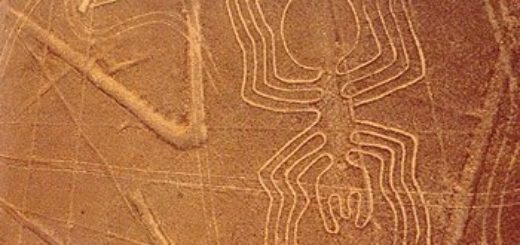An Alien Asteroid’s Been Lurking in Our Solar System Since the Beginning

Lurking near the orbit of Jupiter is an asteroid like no other — it’s an alien from another star system.
Unlike the famous asteroid `Oumuamua that zoomed past our sun and then back out into interstellar space last year, this visitor may have arrived at our solar system billions of years ago and didn’t buy a return ticket. It’s now a permanent resident, trying to blend in.
Alas, “blending in” is hard to do when you’re orbiting the sun the wrong way. It’s also a possible sign that asteroid 2015 BZ 509 wasn’t born here. That’s according to research published in the journal Monthly Notices of the Royal Astronomical Society: Letters.
To understand why BZ 509’s retrograde orbit is a telltale sign it isn’t from ’round these parts, we first must realize why the planets all orbit the same way around the sun.
A Dense Stellar Nursery
Our star was born from a dense region inside a stellar nursery, also known as a molecular cloud. As the gas and dust clumped together under gravity to spark the first nuclear reactions that would become our sun, the cloud spun increasingly faster around the protostar as the material collapsed; a physical consequence of the conservation of angular momentum. Over time, a protoplanetary disk of material formed, spinning in the same direction. Everything that was born from this disk – all planets and asteroids – orbited in the same direction, like clockwork.
But BZ 509 orbits the wrong way, a sign that something strange is afoot. And it’s not just the asteroid’s retrograde orbit that reveals it came from another star, it’s also the length of time it’s been living in that orbit. That’s according to Fathi Namouni, an astronomer at the Côte d’Azur Observatory, France.
“It’s not the fact that the asteroid now has a retrograde orbit that makes it of interstellar origin. It’s the fact that it had the same orbit 4.5 billion years ago,” Namouni, lead author of the new study, says. “That is the only evidence, and it is incontrovertible.”
Namouni and co-author Helena Morais, of São Paulo State University in Brazil, ran sophisticated computer simulations of BZ 509 to figure out that it was likely captured over 4.5 billion years ago by the gravity of our young sun when it was starting to evolve with its stellar siblings. Therefore, it wasn’t simply an asteroid that was born from the sun’s protoplanetary disk that was gravitationally disturbed by a massive planet and flipped into its retrograde orbit. Nope, it had to come from outside the solar system and, like a gravitational catcher’s mitt, the sun caught the interstellar orphan and adopted it as its own.
“Asteroid immigration from other star systems occurs because the sun initially formed in a tightly-packed star cluster, where every star had its own system of planets and asteroids,” Morais said in a statement. “The close proximity of the stars, aided by the gravitational forces of the planets, help these systems attract, remove and capture asteroids from one another.”
interstellar asteroid BZ509
You’re looking at the images that established the retrograde co-orbital nature of interstellar asteroid BZ 509. The asteroid’s circled in yellow.
C. VEILLET/LARGE BINOCULAR TELESCOPE OBSERVATORY
There’s Likely More
There are a handful of known retrograde objects in our solar system, and the researchers think that BZ 509 isn’t the only one to have originated from another star. During the earliest epoch of our solar system many asteroids were likely transferred from star to star, and the researchers are in the process of identifying other interstellar adoptees that were captured by our solar system and orbits shaped by massive Jupiter.
“From our work we see that if objects similar to BZ were captured by Jupiter at the same time and had slightly different orbits, they do not stay with Jupiter like BZ for 4.5 billion years,” says Namouni. “They tend to leave Jupiter’s orbit and go beyond Neptune and assume polar orbits, that is orbits that are perpendicular to the ecliptic. We are currently studying the known asteroids of that type to see if we can link them to BZ.”
The exciting thing about BZ 509 is that, unlike `Oumuamua, it’s staying here and could be a potential target for a future spacecraft mission. If we could directly sample the material from BZ 509, we will be able to study the composition of an ancient exoplanetary system. In doing so, we might learn some surprises about the evolution of our planet.
“It would definitely be a suitable target for a future spacecraft mission to study its composition,” adds Namouni. “We could learn for instance if it carries water with a similar isotopic composition to Earth’s.”
In doing so, he says, we might be able to figure out whether interstellar asteroids contributed to the delivery of water to our planet, a discovery that may have profound implications for the origins of life on Earth.
Although exciting, some experts aren’t convinced of BZ 509’s interstellar beginnings, arguing that it might be an extinguished comet that found itself in a retrograde resonant orbit with Jupiter. Whether or not BZ 509 is truly interstellar, more research is needed to study its chemical composition – perhaps via a sample-return mission – to see if it’s made from the same material that seeded our solar system billions of years ago.



 Creators of mankind
Creators of mankind Description of “Tall white aliens”
Description of “Tall white aliens” Where they came from?
Where they came from? About hostile civilizations
About hostile civilizations The war for the Earth
The war for the Earth “Tall white aliens” about eternal life
“Tall white aliens” about eternal life Video: “Nordic aliens”
Video: “Nordic aliens” Aliens
Aliens Alien encounters
Alien encounters The aliens base
The aliens base UFO
UFO Technology UFO
Technology UFO Underground civilization
Underground civilization Ancient alien artifacts
Ancient alien artifacts Military and UFO
Military and UFO Mysteries and hypotheses
Mysteries and hypotheses Scientific facts
Scientific facts


















